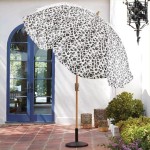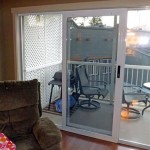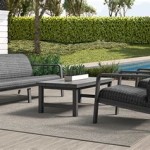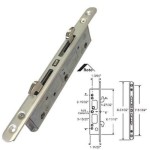How to Keep Flies Away From Your Patio
Flies can quickly turn a pleasant patio experience into an irritating ordeal. These insects, known for their persistent buzzing and unsanitary habits, are attracted to various factors commonly found in outdoor spaces. Effective fly control requires a multifaceted approach, addressing the sources of attraction and implementing preventative measures. This article outlines proven methods to minimize fly presence and maintain a more enjoyable patio environment.
Eliminate Attractants: Food and Waste Management
Flies are primarily drawn to patios by the presence of food sources and breeding grounds. Their acute sense of smell allows them to detect even small amounts of organic matter from a considerable distance. Therefore, meticulous cleaning and waste management are crucial for deterring them.
Food spills are a major attractant for flies. Promptly clean up any food or drink spills on patio surfaces, including tables, chairs, and the ground. Pay particular attention to sugary substances, as these are highly appealing to flies. Consider using appropriate cleaning solutions specifically designed to remove food residue and lingering odors.
Pet food and waste can also significantly contribute to fly populations. Never leave pet food bowls outside for extended periods, and clean them regularly. Proper disposal of pet waste is essential. Use designated waste bags and dispose of them immediately in a tightly sealed container. Regularly cleaning the areas where pets typically relieve themselves can further reduce attraction.
Garbage cans are a prime breeding ground for flies. Use garbage cans with tight-fitting lids to prevent flies from accessing the contents. Line garbage cans with plastic bags to contain spills and facilitate easier cleaning. Regularly empty and clean garbage cans, especially during warmer months. Consider using garbage cans with automatic closing mechanisms or flypaper inside the lid to trap flies that manage to enter.
Compost piles, while beneficial for gardening, can also attract flies if not managed properly. Ensure that compost piles are located a considerable distance from the patio area. Maintain a balance of green and brown materials in the compost pile, and turn it regularly to promote decomposition and reduce odors. Covering the compost pile with a layer of soil or a tarp can also help to minimize fly attraction.
Standing water provides an ideal breeding ground for many fly species. Eliminate any sources of standing water around the patio, such as puddles, clogged gutters, and flowerpots without proper drainage. Bird baths should be emptied and cleaned regularly. Ensure that sprinkler systems are functioning properly and not creating areas of standing water.
Employ Fly Repellents and Traps
In addition to eliminating attractants, various fly repellents and traps can significantly reduce fly populations on the patio. These methods offer a more direct approach to controlling flies and provide immediate relief from their presence.
Commercial fly sprays containing pyrethrins or pyrethroids can be effective for temporarily reducing fly populations. However, exercise caution when using these sprays, as they can be harmful to humans and pets if used improperly. Follow the manufacturer's instructions carefully, and avoid spraying them directly on food or surfaces that come into contact with food. Consider using natural fly sprays containing essential oils such as lavender, peppermint, or eucalyptus as a safer alternative, although their effectiveness may be less pronounced.
Flypaper and fly strips are a traditional and effective method for trapping flies. These sticky surfaces attract flies, which become trapped upon contact. Hang flypaper or fly strips in areas where flies are prevalent, such as near doorways or windows. Replace them regularly as they become covered with flies. Consider using flypaper containing pheromones to enhance their attractiveness to flies.
Electronic fly zappers use ultraviolet light to attract flies and then electrocute them upon contact. These devices can be effective for controlling flies, but they also kill beneficial insects. Place fly zappers away from areas where people congregate to minimize the risk of electrocution. Regularly clean the collection tray to remove dead insects.
Fly traps baited with sugary or protein-rich substances can effectively lure and trap flies. These traps typically consist of a container with an opening that allows flies to enter but prevents them from escaping. Commercial fly traps are readily available, or you can create your own using a plastic bottle, sugar water, and a small amount of vinegar. Position fly traps strategically around the patio to maximize their effectiveness.
Certain plants are known to repel flies due to their strong scents. Planting these herbs and flowers around the patio can help to deter flies naturally. Effective fly-repelling plants include basil, lavender, mint, rosemary, and citronella. Place potted plants strategically around the patio or create a raised flower bed to maximize their effectiveness.
Fans can create a wind barrier that deters flies from landing on food or people. The constant movement of air makes it difficult for flies to fly and land effectively. Use oscillating fans or ceiling fans to circulate air around the patio. Position fans strategically to maximize their coverage and effectiveness.
Implement Preventative Measures: Physical Barriers and Regular Maintenance
Proactive measures can significantly reduce the likelihood of fly infestations on the patio. Implementing physical barriers and maintaining a clean and well-maintained environment are key to long-term fly control.
Screens are an effective physical barrier that prevents flies from entering enclosed patio spaces. Install screens on doors and windows to prevent flies from gaining access to the patio. Ensure that screens are properly fitted and maintained, repairing any holes or tears promptly. Consider using screen doors with automatic closing mechanisms to prevent flies from entering when the door is opened.
Regular power washing of the patio surface can help to remove food residue, debris, and potential breeding grounds for flies. Power washing can effectively eliminate organic matter from cracks and crevices that are difficult to clean by other means. Use appropriate cleaning solutions to further enhance the effectiveness of power washing.
Maintain proper drainage around the patio to prevent the accumulation of standing water. Ensure that gutters and downspouts are clear of debris and functioning properly. Repair any leaks in water pipes or sprinkler systems to minimize the sources of standing water. Consider installing French drains or other drainage systems to improve water runoff.
Trim hedges and shrubs regularly to reduce potential harborage areas for flies. Overgrown vegetation can provide shade and shelter for flies, making the patio more attractive to them. Prune branches that overhang the patio to reduce the amount of organic matter that falls onto the surface. Removing leaf litter and debris from around hedges and shrubs can further reduce fly attraction.
Inspect the patio regularly for signs of fly infestations, such as clusters of flies, larvae, or breeding sites. Early detection of fly infestations allows for prompt action to prevent them from escalating. Pay particular attention to areas where food residue, garbage, or standing water are present. Consult with a pest control professional if you suspect a significant fly infestation.
Educating occupants about fly prevention strategies can contribute significantly to long-term fly control on the patio. Emphasize the importance of cleaning up food spills, disposing of garbage properly, and eliminating standing water. Encourage occupants to report any signs of fly infestations promptly. By fostering a culture of awareness and prevention, you can create a more enjoyable and fly-free patio environment.
By implementing a comprehensive approach that combines elimination of attractants, use of repellents and traps, and preventative measures, it is possible to significantly reduce fly populations and enjoy a more pleasant and hygienic patio experience.

How To Keep Flies Away Outside With Pennies Bag Of Water

How To Keep Flies Away Outside With Pennies Bag Of Water
:max_bytes(150000):strip_icc()/getting-rid-of-flies-outdoor-2656268_FINAL-729e4e7d8cd641dc9ccfaa659d73c98e.png?strip=all)
How To Get Rid Of Flies Outside And Keep Them From Coming Back

How To Keep Pesky Flies Away From Your Bbq 6 Steps Instructables

8 Ways To Keep Your Backyard Barbecue Bug Free

How To Keep Flies Away Outside With Pennies Bag Of Water

How To Keep Flies Away From Your Patio Porch Deck Naturally

How To Keep Flies Away Outside With Pennies Bag Of Water

How To Keep Bugs Off Your Patio Turf Factory

How To Get Rid Of Flies Outside Naturally Sugar Cloth








